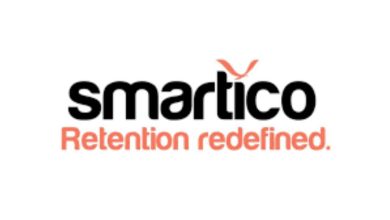
GoDaddy is a popular web hosting and domain registrar company that has been providing services since 1999. They offer various features and tools to help businesses establish their online presence. One of these features is GoDaddy Email, which allows users to create and manage their professional email accounts using their domain name. In this comprehensive guide, we will walk you through the process of GoDaddy email login, its features, and how to troubleshoot common issues.
1. Introduction for GoDaddy email login
In today’s digital age, having a professional email address is crucial for establishing credibility and building trust with your customers. GoDaddy Email provides a seamless solution for creating and managing professional email accounts using your domain name. Whether you are a small business owner, blogger, or freelancer, GoDaddy Email offers a range of features to meet your specific needs.
2. Benefits of GoDaddy email login
GoDaddy Email offers several benefits that make it an ideal choice for individuals and businesses. Here are some key advantages:
Increased Brand Recognition
By using your own domain name in your email address, you create a professional and branded image for yourself or your business. This helps to build trust among your recipients and increases brand recognition.
Customization Options
GoDaddy Email allows you to create email addresses using your domain name, giving you the flexibility to choose email IDs that suit your business or personal branding.
Enhanced Security
With GoDaddy Email, you can rest assured that your emails are protected with advanced security measures, including encryption and spam filters, to safeguard your sensitive information.
Access Anywhere, Anytime
Whether you are at your desk or on the go, GoDaddy Email offers multiple login options, including webmail, desktop email clients, and mobile email clients, ensuring you can access your emails anytime and from any device.
3. How to Set Up GoDaddy Email
To get started with GoDaddy Email, you’ll need to follow a few simple steps. Here’s a step-by-step guide on how to set up your GoDaddy email account:
Step 1: Purchase a Domain
Before you can create a GoDaddy email account, you need to have a registered domain name. If you already have a domain, you can skip this step. If not, you can purchase a domain from GoDaddy or any other domain registrar.
Step 2: Choose a GoDaddy Email Plan
Once you have a domain, you need to choose a GoDaddy Email plan that suits your requirements. GoDaddy offers different plans with varying storage capacities and features. Choose the plan that best suits your spending limit and needs.
Step 3: Create Your Email Account
After purchasing the email plan, you can create a GoDaddy email account. Log in to your GoDaddy account, go to the Email & Office section, and click on the Email icon. Follow the prompts to create your email account, including selecting your domain and setting up your email address and password.
Step 4: Access Your GoDaddy Email
Once your email account is created, you can access your GoDaddy email using the webmail login or configure it with your preferred email client. We will discuss the login options in detail in the next section.
4. GoDaddy Email Features
GoDaddy Email comes with a range of features that enhance your email communication experience. Let’s examine a few of these characteristics in more detail:
Email Storage
GoDaddy offers generous storage capabilities for your emails, ensuring you have ample space to store your messages, attachments, and other content.
Custom Domain
With GoDaddy Email, you can create email addresses using your domain name, giving you a professional and branded identity.
Forwarding Email
You can set up email forwarding rules to automatically forward incoming emails to another email address, allowing you to manage multiple email accounts from a single inbox.
Autoresponders
GoDaddy Email allows you to set up autoresponders, which automatically send pre-defined messages to incoming emails. This feature is useful when you are away or unable to respond immediately.
Email Filters
You can create email filters to organize your incoming emails into different folders based on specific criteria, such as sender, subject, or keywords.
5. GoDaddy Email Login Options
GoDaddy Email provides multiple login options to access your email account. Let’s explore each of these options:
Webmail Login
The most convenient way to access your GoDaddy email is through the webmail login. Simply open your preferred web browser, go to the GoDaddy website, and click on the “Email” link. Log in using your email address and password and you will be able to view and manage your emails.
Desktop Email Clients
If you prefer to use desktop email clients like Microsoft Outlook or Apple Mail, you can configure your GoDaddy email account with these clients. GoDaddy provides step-by-step instructions on how to set up your email account on various email clients.
Mobile Email Clients
For on-the-go access, you can configure your GoDaddy email account with mobile email clients on your smartphone or tablet. You can use the native email apps or download third-party apps compatible with your device’s operating system.
6. Troubleshooting GoDaddy Email Login Issues
While GoDaddy Email login is usually a smooth process, you may encounter some issues at times. The following are some typical login problems and how to fix them:
Forgot Password
If you forget your GoDaddy Email password, you can easily reset it by clicking on the “Forgot Password” link on the login page. Follow the instructions to reset your password and regain access to your email account.
Incorrect Login Credentials
Verify again that the email address and password you are entering are accurate. Due to the case sensitivity of passwords, make sure the CAPS LOCK key is not activated. If you are still unable to log in, you can contact GoDaddy’s customer support for assistance.
Two-Factor Authentication
If you have enabled two-factor authentication for your GoDaddy account, you will need to enter a verification code in addition to your password. Make sure you have access to the device or app where the verification code is generated.
7. GoDaddy Email Settings
To configure GoDaddy email login with email clients or troubleshoot email issues, you may need to know the email server settings. Here are the key settings:
- Incoming Mail Server Settings
- Incoming Server: imap.secureserver.net
- Port: 993
- Secure SSL/TLS: Yes
- Outgoing Mail Server Settings
- Outgoing Server: smtpout.secureserver.net
- Port: 465 (SSL) or 587 (TLS)
- Secure SSL/TLS: Yes
SSL Settings
SSL: Enable SSL for both incoming and outgoing servers.
8. GoDaddy Email Alternatives
While GoDaddy Email offers a robust solution for professional email, there are alternative email service providers you can consider. Some popular alternatives include:
- Google Workspace (formerly G Suite)
- Microsoft 365
- Zoho Mail
Compare the features, pricing, and user reviews of these alternatives to determine which one best suits your needs.
9. Conclusion
GoDaddy email login provides a reliable and user-friendly platform for creating and managing professional email accounts. With its range of features and login options, you can stay connected and communicate effectively with your clients and colleagues. Follow the steps outlined in this guide to set up your GoDaddy email account and make the most of its features. In case you encounter any issues, refer to the troubleshooting section or reach out to GoDaddy’s customer support for assistance. Start using GoDaddy Email today and take your email communication to the next level.
Additional Information:
Make sure to keep your GoDaddy email password secure and avoid sharing it with others.
Regularly update your email client to ensure compatibility with GoDaddy’s server settings.
Check GoDaddy‘s website or contact their customer support for any updates or changes to the email login process.




